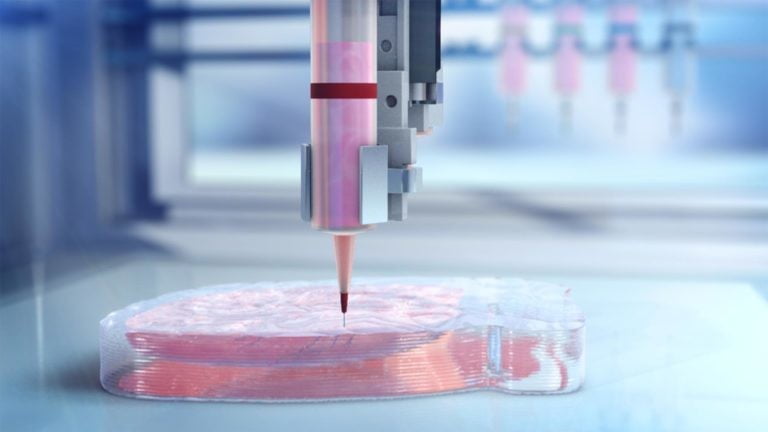
It’s not science fiction anymore: 3D-printing a human heart is now a reality.
A company called Biolife4D has developed the technology to print human cardiac tissue by collecting blood cells from a patient and converting these cells to a type of stem cell called Induced Pluripotent Stem (iPS) cells. The technology could eventually be used to create thousands of much-needed hearts for transplantation.
“What we’re working on is literally bioprinting a human heart viable for transplantation out of a patient’s own cells, so that we’re not only addressing the problem with the lack of [organ] supply, but by bioengineering the heart out of their own cells, we’re eliminating the rejection,” Biolife4D CEO Steven Morris said during an appearance on Digital Trends Live on Monday, referring to the body’s impulse to reject a transplanted organ.
Biolife4D’s iPS cells can then be converted to heart cells and used as “bioink” in a 3D printer. Recently, this technique was used to 3D print a semi-functioning miniature human heart.
Digital Trends spoke with Biolife4D Chief Science Officer, Ravi Birla, about this remarkable achievement and what the future of organ printing holds. The 3D-printed mini heart, which you can see below, has the same structure as a real heart with its four internal chambers. The aim was to create something similar enough to a real heart that it can be used for cardiotoxicity testing — that is, for drug companies and medical researchers to test what happens to a heart when it suffers problems with the muscle or with heart beats.
This means the mini heart is partially functional, as Birla explains: “The first version of our mini heart is designed to provide pharma and drug discovery companies a scaled-down version of a human heart for testing… While our mini heart is not designed to be able to survive an animal or human long-term, it is designed to provide a better predictive model for cardiotoxicity testing as compared to the animal models currently being used.”

This is an impressive achievement — “It’s as close as anyone has gotten to producing a fully functional heart through 3D bioprinting,” Birla says. But there are several challenges to consider before a full-sized heart ready for transplant can be printed.
The first: scaling up the bioprinting technology to allow the production of a full-size heart. The Biolife4D team also wants to work more on the bioink used in the printing process, to more closely replicate the heart’s natural extracellular matrix (ECM), which is the scaffolding of proteins which creates strength in the organ. Other challenges are matters of optimization, such as improving the efficiency of the cell re-programming process.
Once this has been done, the team can work more on getting the printed heart to survive in an animal. This is more difficult than producing a heart for testing, as it requires individual components of the heart to perform their functions perfectly, and it also requires finding a way to mimic the heart’s vascularization network to keep the organ alive after it is printed.

The Biolife4D team is confident that they can meet these challenges, though it may take some time.
“The truth of the matter is, we don’t know exactly [how long it will take],” Biolife4D CEO Morris said. “We’re hoping to scale up to a full heart in about a three year time frame.”
Editor’s Note: In the video interview with BIOLIFE4D CEO Steven Morris, the text of the lower-third reads “fully-functioning.” This is not factual. The 3D-printed heart is a mini heart and not a fully functioning human heart. Digital Trends regrets the error.
- Casio’s newest PRO TREK smartwatch finally adds heart rate monitoring
- Facebook’s content moderators break their silence on terrifying work conditions
read more at https://www.digitaltrends.com by Georgina Torbet
Tech









